This content originally appeared on Level Up Coding - Medium and was authored by Hayk Simonyan
Web Dev Basics: Data types, Variables, Loops, and More
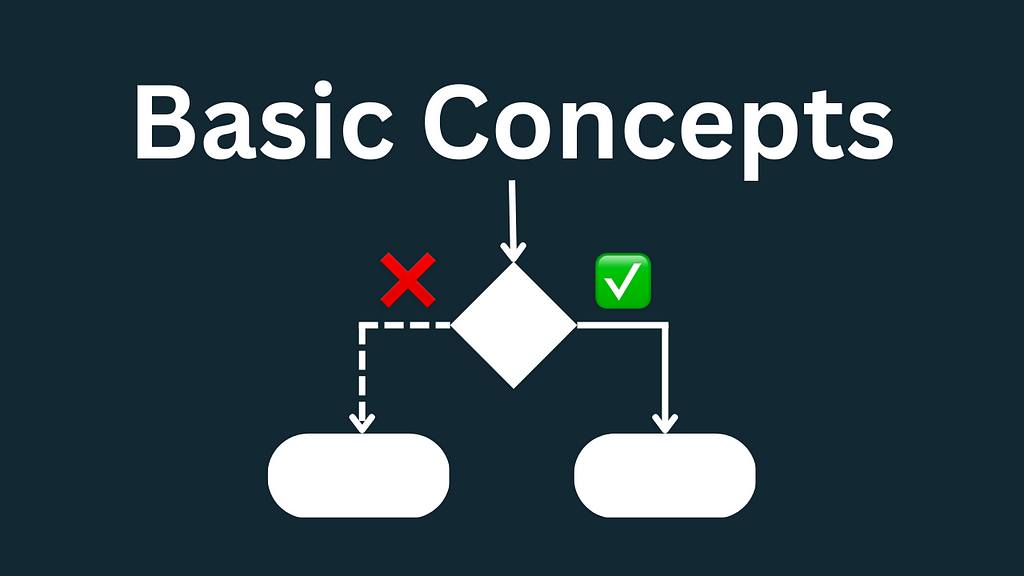
Basic Concepts
Web development basics are the foundational concepts and principles of computer programming that are essential for writing software and building applications. These can be divided into basic and advanced concepts. In this article, we will focus on the basics, including data types, variables, conditions, functions, and loops.
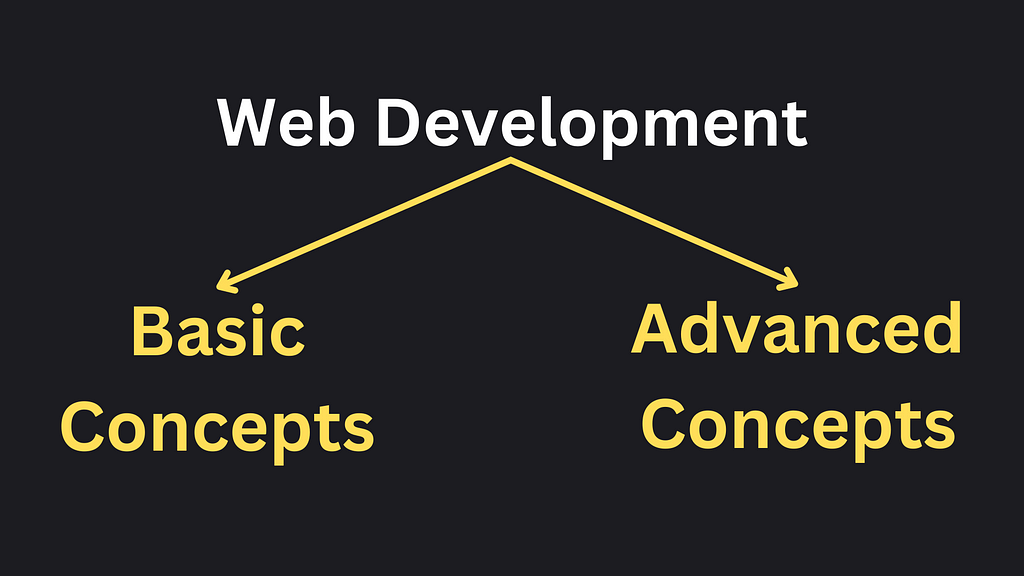
Data Types
Data types are the building blocks of programming. They tell the computer how to interpret and store data. The most common data types are integers, strings, booleans, dates, arrays, and objects. Integers are whole numbers, strings are text, booleans can be either true or false, date and time data types can represent a specific point in time and objects store multiple pieces of data.
- integer — numbers (2, 5, 109, …)
- string — text (“Lorem ipsum”, ...)
- boolean — true, false
- date — specific point in time (Feb 7, 2023)
- object — { name: “John”, age: “19” }
It’s important to choose the right data type for your variables, as it will determine the kind of values it can hold and the operations that can be performed on it. For example, an integer variable can hold only numbers, and you can perform mathematical operations on it. A string variable can hold only text, and you can perform text manipulation operations on it.
Variables
Variables are used to store data in a program. They have a name, and the value stored in a variable can be changed during the execution of a program. To create a variable, you use a keyword (such as “var” or “let” in JavaScript) followed by the name of the variable, and an assignment operator (=) followed by the value to be stored in the variable.
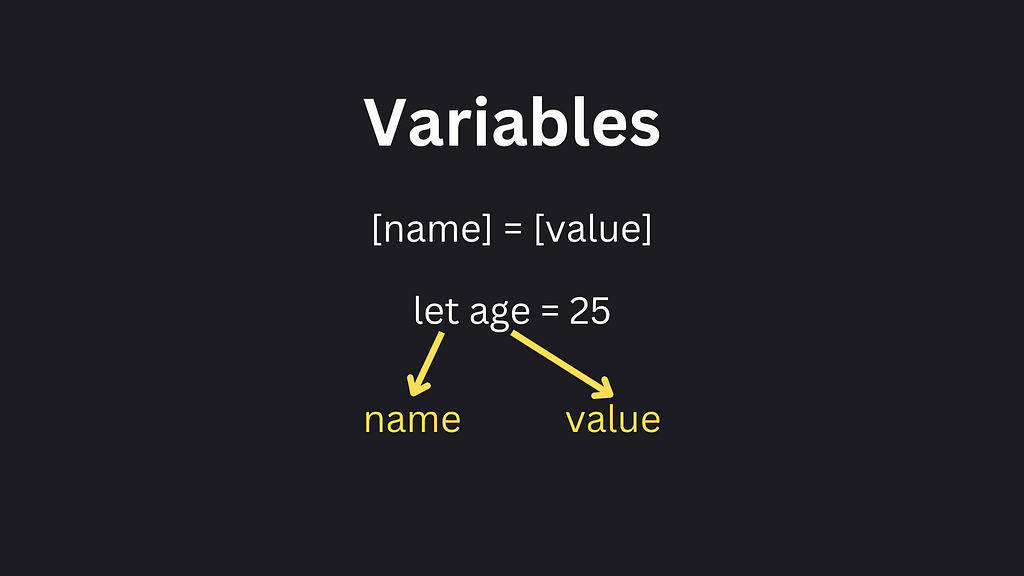
For example, you can create a variable called “age” and assign it a value of 25 like this:
let age = 25;
Once a variable is created, you can use the variable’s name to access the value stored in it. For example, you can use the variable “age” in a statement like this:
console.log("My age is " + age); // Output: My age is 25Conditions and Logic Statements
Conditions and logic statements are used to control the flow of a program. They can be used to make decisions, such as whether to execute a certain statement or not. The most common conditional statement in programming is the if-else statement. It is used to execute a statement or a block of code if a certain condition is true and execute a different statement or block of code if the condition is false.
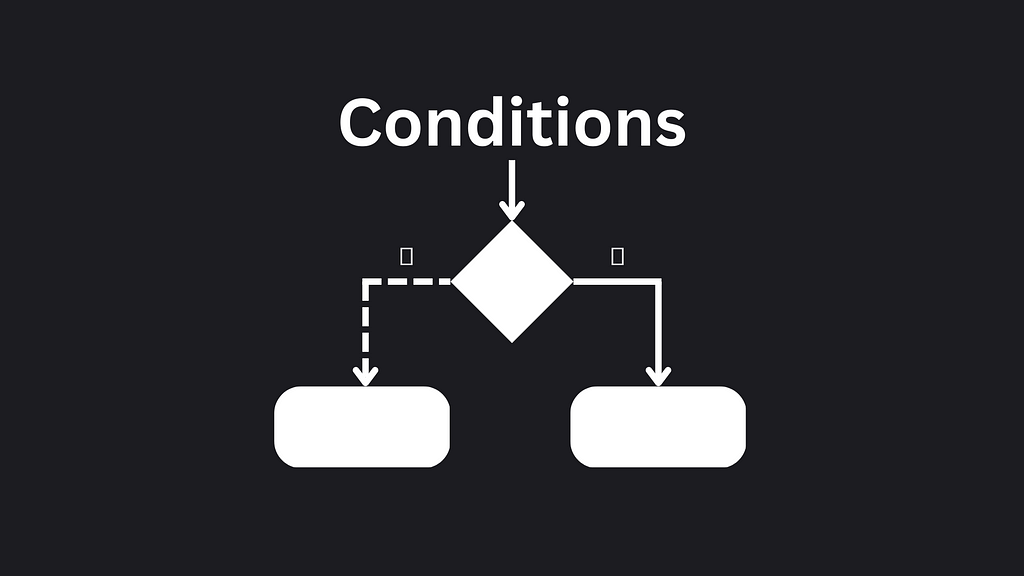
For example, you can use an if-else statement to check if a number is greater than or equal to 10, like this:
let num = 5;
if (num >= 10) {
console.log("Number is greater than or equal to 10");
} else {
console.log("Number is less than 10");
}
Functions
Functions are blocks of code that can be called multiple times to perform a specific task. They are also known as methods. They can be used to simplify a program and make it more organized.
To create a function, you use the keyword “function”, followed by the name of the function, and any parameters it takes. Then, you write the code that the function will execute when it is called.
For example, you can create a function that prints the square of a number like this:
function square(num) {
console.log(num * num);
}And then call it somewhere else in your code to return the square of 5.
// call the function
square(5); // Output: 25j
Loops
Loops are used to repeat a block of code multiple times. They are often used to iterate over a collection of data, such as an array or an object. The most common loop in programming is the for loop. It is used to execute a statement or a block of code a certain number of times.
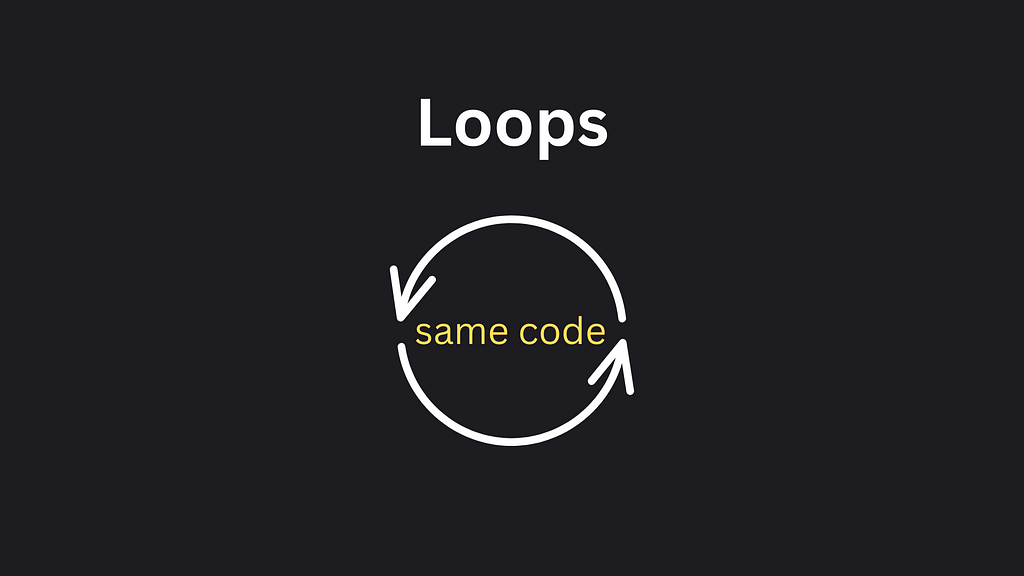
For example, you can use a for loop to print the numbers from 1 to 10 like this:
for (let i = 1; i <= 10; i++) {
console.log(i);
}Advanced Concepts
These are the basics of web development. There are also advanced concepts such as algorithms, data structures, version control, software testing, and memory management.
- Algorithms: A set of instructions used to solve a problem or accomplish a task
- Data structures: A way of organizing and storing data in a computer program, such as arrays, linked lists, and trees.
- Version Control: A system that allows multiple developers to work on the same codebase and track changes over time.
- Software testing: The process of verifying that a program works as intended and identifying any bugs or issues.
- Memory Management: The process of allocating, deallocating, and managing memory usage during program execution.
These are important to understand but not necessary for those who are just starting out.
We will cover the advanced concepts in future articles. Follow me for weekly web development content.
Web Dev Basics: Data types, Variables, Loops, and more was originally published in Level Up Coding on Medium, where people are continuing the conversation by highlighting and responding to this story.
This content originally appeared on Level Up Coding - Medium and was authored by Hayk Simonyan
Hayk Simonyan | Sciencx (2023-02-06T01:53:35+00:00) Web Dev Basics: Data types, Variables, Loops, and more. Retrieved from https://www.scien.cx/2023/02/06/web-dev-basics-data-types-variables-loops-and-more/
Please log in to upload a file.
There are no updates yet.
Click the Upload button above to add an update.
